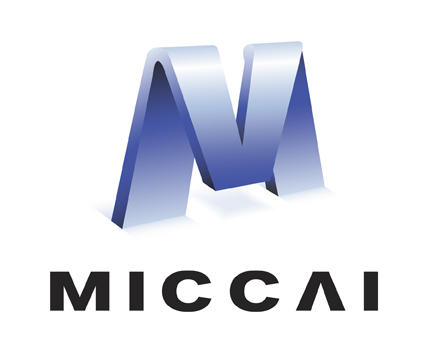Abstract
The white-matter (micro-)structural architecture of the brain promotes synchrony among neuronal populations, giving rise to richly patterned functional connections. A fundamental problem for systems neuroscience is determining the best way to relate structural and functional networks quantified by diffusion tensor imaging and resting-state functional MRI. As one of the state-of-the-art approaches for network analysis, graph convolutional networks (GCN) have been separately used to analyze functional and structural networks, but have not been applied to explore inter-network relationships. In this work, we propose to couple the two networks of an individual by adding inter-network edges between corresponding brain regions, so that the joint structure-function graph can be directly analyzed by a single GCN. The weights of inter-network edges are learnable, reflecting non-uniform structure-function coupling strength across the brain. We apply our Joint-GCN to predict age and sex of 662 participants from the public dataset of the National Consortium on Alcohol and Neurodevelopment in Adolescence (NCANDA) based on their functional and micro-structural white-matter networks. Our results support that the proposed Joint-GCN outperforms existing multi-modal graph learning approaches for analyzing structural and functional networks.
Access this chapter
Tax calculation will be finalised at checkout
Purchases are for personal use only
Similar content being viewed by others
References
Baum, G., et al.: Development of structure-function coupling in human brain networks during youth. Proc. Natl. Acad. Sci. 117(1), 771–778 (2019)
Brown, S., et al.: The national consortium on alcohol and NeuroDevelopment in Adolescence (NCANDA): a multisite study of adolescent development and substance use. J. Stud. Alcohol Drugs 76(6), 895–908 (2015)
D’Souza, N., et al.: A matrix autoencoder framework to align the functional and structural connectivity manifolds as guided by behavioral phenotypes, 12907, 625–636 (2021)
Gadgil, S., Zhao, Q., Pfefferbaum, A., Sullivan, E.V., Adeli, E., Pohl, K.M.: Spatio-temporal graph convolution for resting-state fMRI analysis. In: Martel, A.L., et al. (eds.) MICCAI 2020. LNCS, vol. 12267, pp. 528–538. Springer, Cham (2020). https://doi.org/10.1007/978-3-030-59728-3_52
Hanik, M., Demirtaş, M.A., Gharsallaoui, M.A., Rekik, I.: Predicting cognitive scores with graph neural networks through sample selection learning. Brain Imaging Behav. 16, 1–16 (2021)
Jung, J., Cloutman, L., Binney, R., Ralph, M.: The structural connectivity of higher order association cortices reflects human functional brain networks. Cortex 97, 221–239 (2016)
Kipf, T.N., Welling, M.: Semi-supervised classification with graph convolutional networks. arXiv preprint arXiv:1609.02907 (2016)
Klambauer, G., Unterthiner, T., Mayr, A., Hochreiter, S.: Self-normalizing neural networks. In: Advances in Neural Information Processing Systems, vol. 30 (2017)
Li, X., et al.: BrainGNN: interpretable brain graph neural network for fMRI analysis. Med. Image Anal. 74, 1–13 (2021)
Liu, J., Ma, G., Jiang, F., Lu, C.T., Yu, P., Ragin, A.: Community-preserving graph convolutions for structural and functional joint embedding of brain networks. In: International Conference on Big Data (Big Data), pp. 1163–1168, November 2019
Moody, J., Adluru, N., Alexander, A., Field, A.: The connectomes: methods of white matter tractography and contributions of resting state fMRI. Semin. Ultrasound CT and MRI 42(5), 507–522 (2021)
Pohl, K.M., et al.: The ‘NCANDA_PUBLIC_6Y_DIFFUSION_V01’ data release of the national consortium on alcohol and neurodevelopment in adolescence (NCANDA). Sage Bionetworks Synapse (2022). https://doi.org/10.7303/syn27226988
Pohl, K.M., et al.: The ‘NCANDA_PUBLIC_6Y_REDCAP_V04’ data release of the national consortium on alcohol and neurodevelopment in adolescence (NCANDA). Sage Bionetworks Synapse (2022). https://doi.org/10.7303/syn26951066
Pohl, K.M., et al.: The ‘NCANDA_PUBLIC_6Y_RESTINGSTATE_V01’ data release of the national consortium on alcohol and neurodevelopment in adolescence (NCANDA). Sage Bionetworks Synapse (2022). https://doi.org/10.7303/syn32303917
Pujol, J., Vendrell, P., Junqué, C., Martí-Vilalta, J.L., Capdevila, A.: When does human brain development end? Evidence of corpus callosum growth up to adulthood. Ann. Neurol. Off. J. Am. Neurol. Assoc. Child Neurol. Soc. 34(1), 71–75 (1993)
Rodriguez-Vazquez, B., et al.: Gradients of structure-function tethering across neocortex. PNAS 116(42), 21219–21227 (2019)
Rohlfing, T., Zahr, N., Sullivan, E., Pfefferbaum, A.: The SRI24 multichannel atlas of normal adult human brain structure. Hum. Brain Mapp. 31(5), 798–819 (2009)
Song, T.A., et al.: Graph convolutional neural networks for Alzheimer’s disease classification. In: IEEE International Symposium on Biomedical Imaging, vol. 2019, pp. 414–417, April 2019
Sporns, O., Tononi, G., Kötter, R.: The human connectome: a structural description of the human brain. PLoS Comput. Biol. 1(4), 245–251 (2005)
Weissenbacher, A., Kasess, C., Gerstl, F., Lanzenberger, R., Moser, E., Windischberger, C.: Correlations and anticorrelations in resting-state functional connectivity MRI: a quantitative comparison of preprocessing strategies. Neuroimage 47(4), 1408–1416 (2009)
Yalcin, A., Rekik, I.: A diagnostic unified classification model for classifying multi-sized and multi-modal brain graphs using graph alignment. J. Neurosci. Methods 348, 1–14 (2021)
Yang, J., Zhu, Q., Zhang, R., Huang, J., Zhang, D.: Unified brain network with functional and structural data, 12267, 114–123 (2020)
Zhang, X., He, L., Chen, K., Luo, Y., Zhou, J., Wang, F.: Multi-view graph convolutional network and its applications on neuroimage analysis for Parkinson’s disease. In: AMIA Annual Symposium Proceedings, vol. 2018, pp. 1147–1156. American Medical Informatics Association (2018)
Zhao, Q., et al.: Longitudinally consistent estimates of intrinsic functional networks. Hum. Brain Mapp. 40(8), 2511–2528 (2019)
Zhao, Q., et al.: Association of heavy drinking with deviant fiber tract development in frontal brain systems in adolescents. JAMA Psychiatry 78(4), 407–415 (2020)
Acknowledgment
This research was supported in part by NIH U24 AA021697, K99 AA028840, and Stanford HAI GCP Credit. The data were part of the public NCANDA data releases NCANDA_PUBLIC_6Y_REDCAP_V04 [13], NCANDA_PUBLIC_6Y_DIFFUSION_V01 [12], and NCANDA_PUBLIC_6Y_RESTINGSTATE_V01 [14], whose collection and distribution were supported by NIH funding AA021697, AA021695, AA021692, AA021696, AA021681, AA021690, and AA02169.
Author information
Authors and Affiliations
Corresponding author
Editor information
Editors and Affiliations
Rights and permissions
Copyright information
© 2022 The Author(s), under exclusive license to Springer Nature Switzerland AG
About this paper
Cite this paper
Li, Y., Wei, Q., Adeli, E., Pohl, K.M., Zhao, Q. (2022). Joint Graph Convolution for Analyzing Brain Structural and Functional Connectome. In: Wang, L., Dou, Q., Fletcher, P.T., Speidel, S., Li, S. (eds) Medical Image Computing and Computer Assisted Intervention – MICCAI 2022. MICCAI 2022. Lecture Notes in Computer Science, vol 13431. Springer, Cham. https://doi.org/10.1007/978-3-031-16431-6_22
Download citation
DOI: https://doi.org/10.1007/978-3-031-16431-6_22
Published:
Publisher Name: Springer, Cham
Print ISBN: 978-3-031-16430-9
Online ISBN: 978-3-031-16431-6
eBook Packages: Computer ScienceComputer Science (R0)


